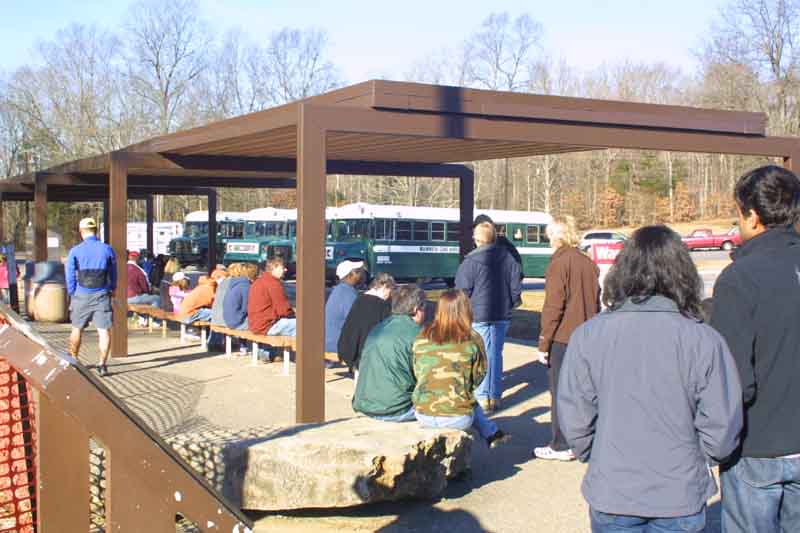
|
This tour starts with a bus ride, out to a
remote cave entrance.
|

|
At the site, our ranger guide advises us of
the rules of the cave, and gives a few indications of what we may expect
to see below.
|
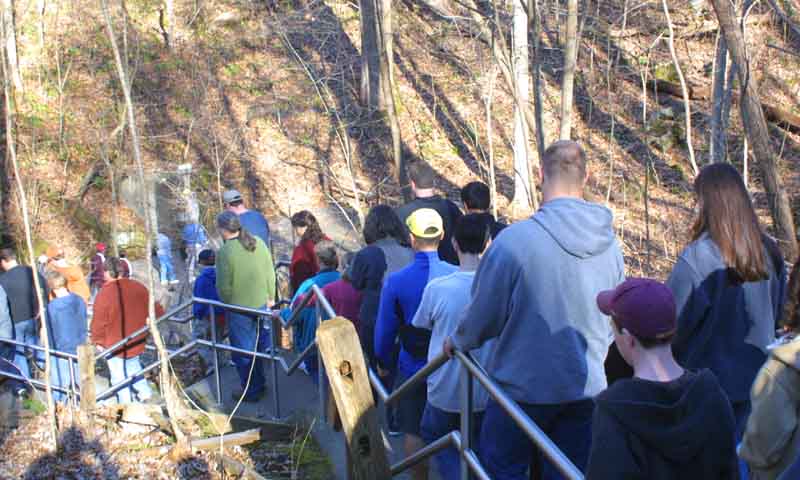
|
Down we go. these stairs lead to a steel door,
which seals off the cave from unwanted trespassers, and form the drying
air of the surface. If the caves were not sealed, they would dry out.
|
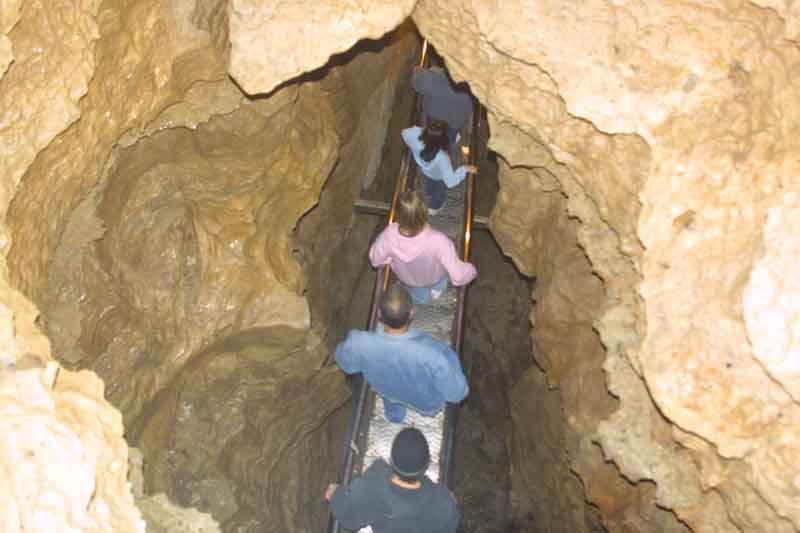
|
A look down at my fellow tourists. The first
part of this tour is very vertical. Stairs and ramps are set in place, as
without them this area would be inaccessible, except to skilled climbers,
with proper equipment.
|
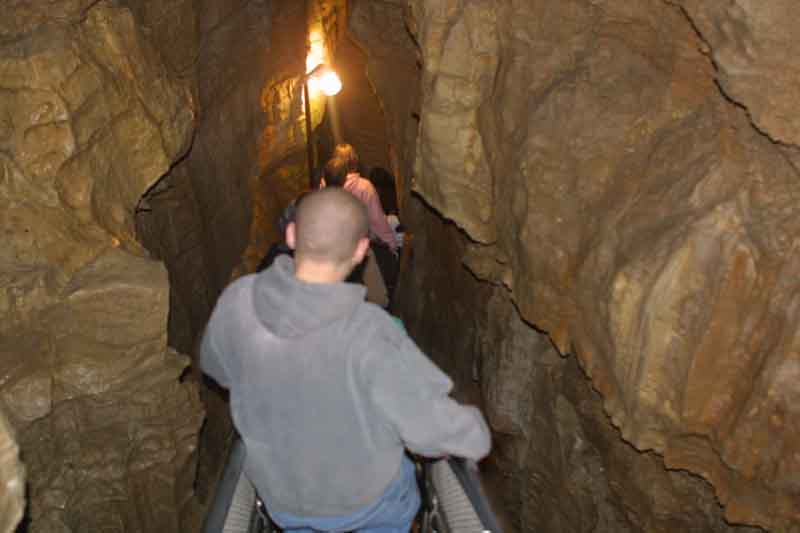
|
We continue on our way down. There are no
elevators here, and we have a ways to go.
|
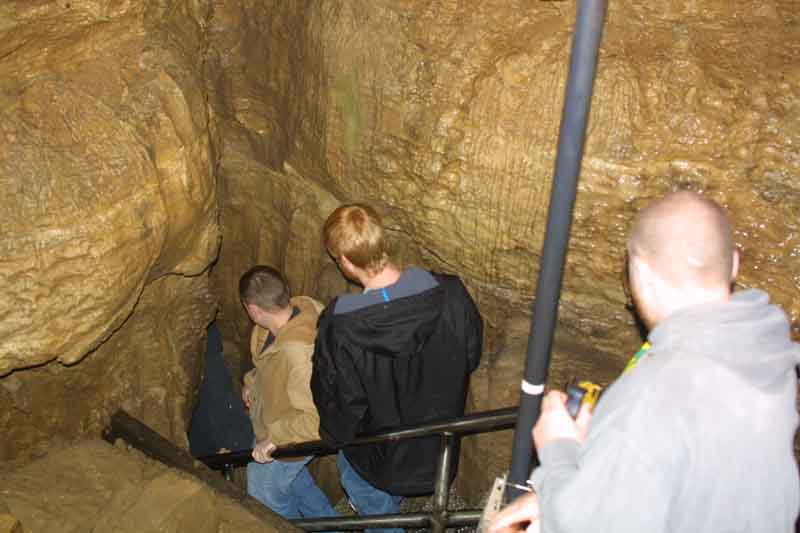
|
Still more stairs squeeze us between cracks,
and down into fissures.
|
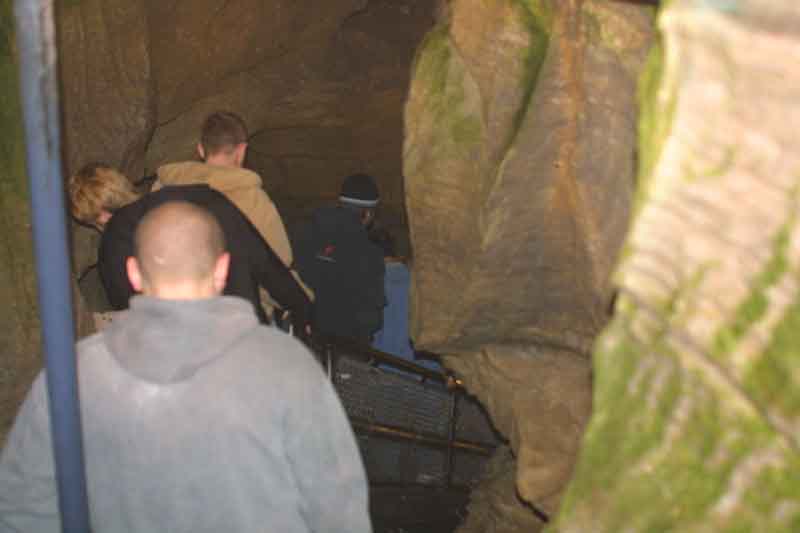
|
The park emphasizes that, though visitors
need not be athletes, they should be in reasonably good shape. This is why.
It is a long way to the bottom.
|
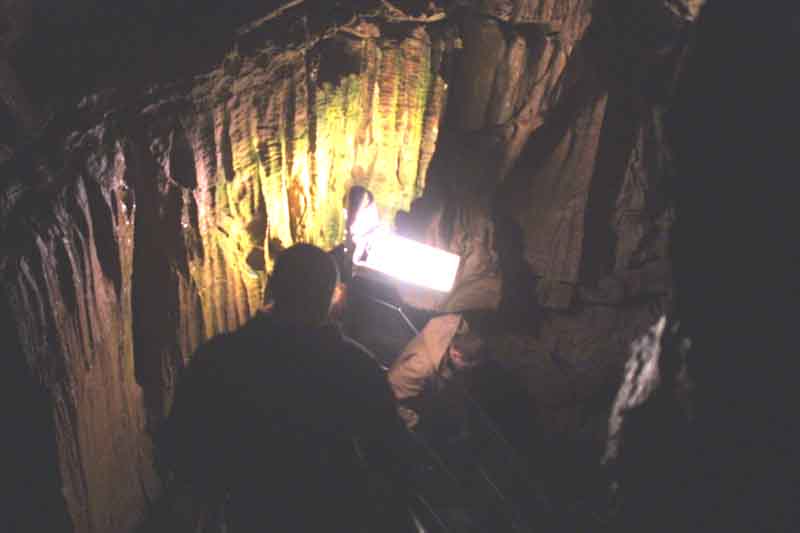
|
A look at one of the lights which keep us
from fumbling around in the dark.
|

|
The stainless steel stairs were specially
installed, over a period of years, by experts, who were able to put them
in place, with a minimum impact on the cave system. Stainless steel was required,
because it is quite humid down in the caves.
|

|
Winding our way through the cracks in the
rock, we are nearly at the bottom.
|
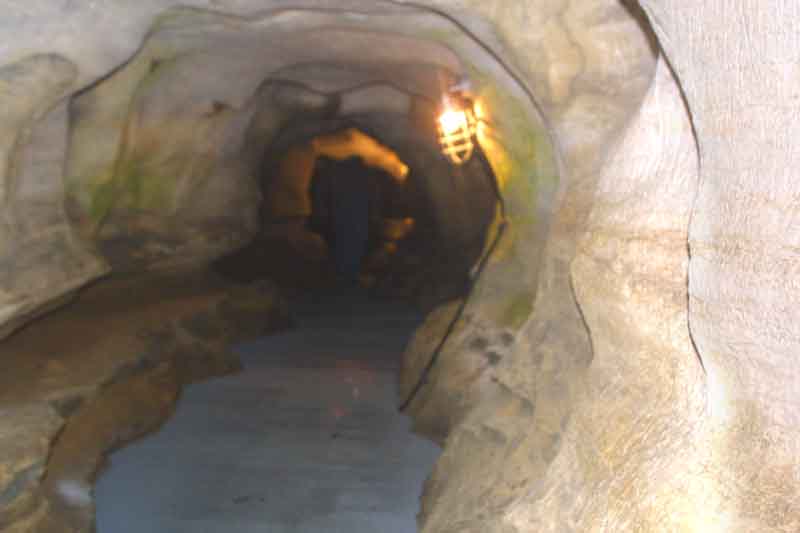
|
Looking a pit like a subway tunnel, this passage
takes us through the main level of this portion of the cave.
|

|
Our first really large chamber. We stop here,
for a moment, and take a break. This chamber is set up as an amphitheater,
and we listed, as our ranger guide explains how these caves were formed.
|

|
A look back at the trail by which we arrived.
|
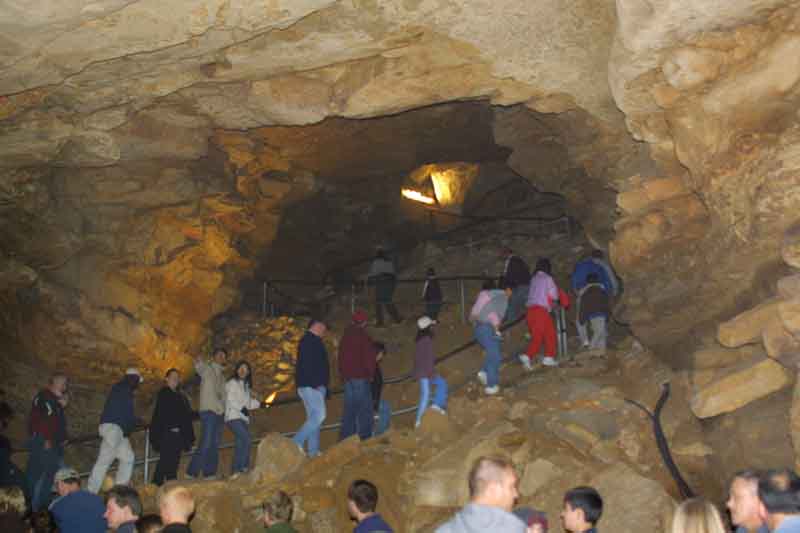
|
In the surface world, what goes up, must come
down. Here in the underground world, what comes down, must go back up. Though
the tour is far from over, we have reached our point of deepest descent.
It is all uphill from here.
|
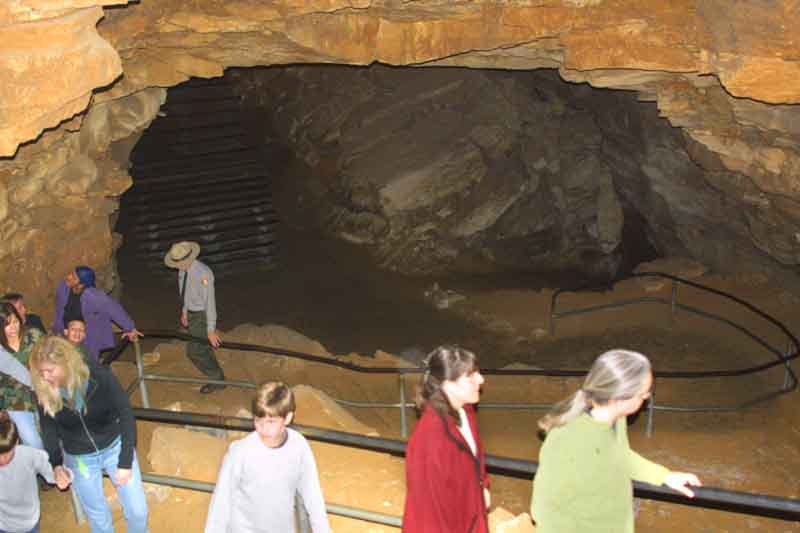
|
A look back at the amphitheater, showing some
of the benches, upon which we were seated. A "clean up" ranger heads up
the back of the line, to prevent stragglers from being separated, or lost.
He also turns the lights out, after we leave an area.
|

|
We now pass through a series of smaller tunnels,
often with many fallen rocks.
|
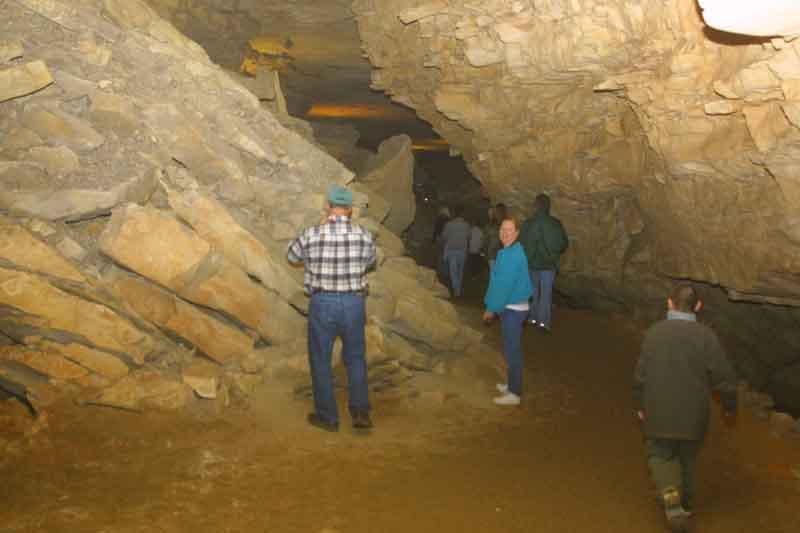
|
The flat roof, and flat floor of the these
tunnels is actually natural. This area was originally carved out with smooth
walls. The rough, and randomly shaped rocks are from rock slides, and cave
ins.
|

|
A large passage, makes a good spot for another
stop, and for another short lecture. The rangers here also took the opportunity
to switch off the lights, and show us all, just how dark these caves really
are.
|

|
As we continue on our way, we see more signs
of early cave ins, and disturbances of the rocks.
|
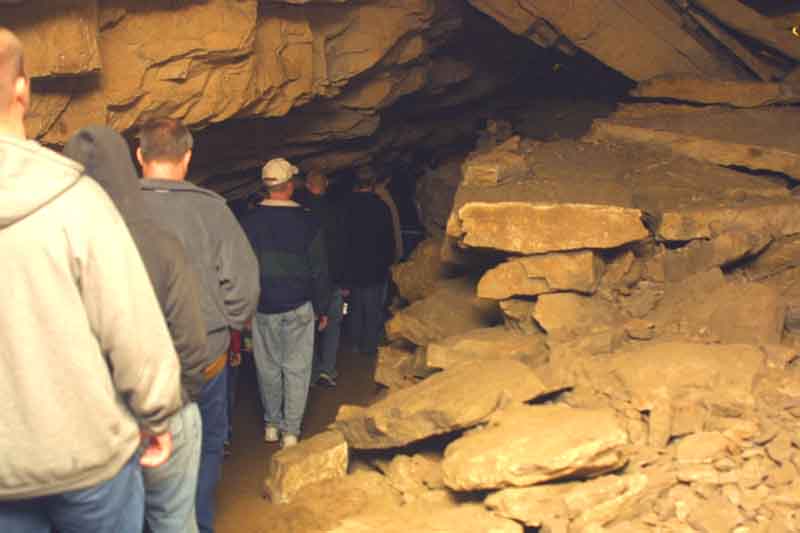
|
Continuing on through the narrows of
this portion of the cave.
|

|
Continuing on, through one of the smoother
sections of the cave. The flat, protective ceiling, and original smooth floor
are pretty evident in this photo.
|

|
More boulders, and bits of rubble, indicate
cave ins. Note the almost perfectly flat roof. This is natural, and is caused
by the rock shield which overhangs most of the cave system.
|
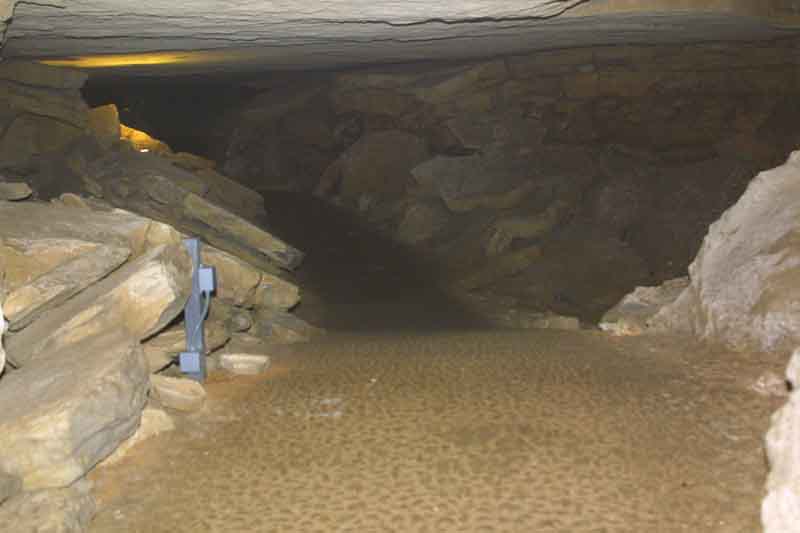
|
A section of pathway, with a flat roof and
flat floor, lead off towards a large chamber. Note the power box, to
the left, which controls the lights.
|
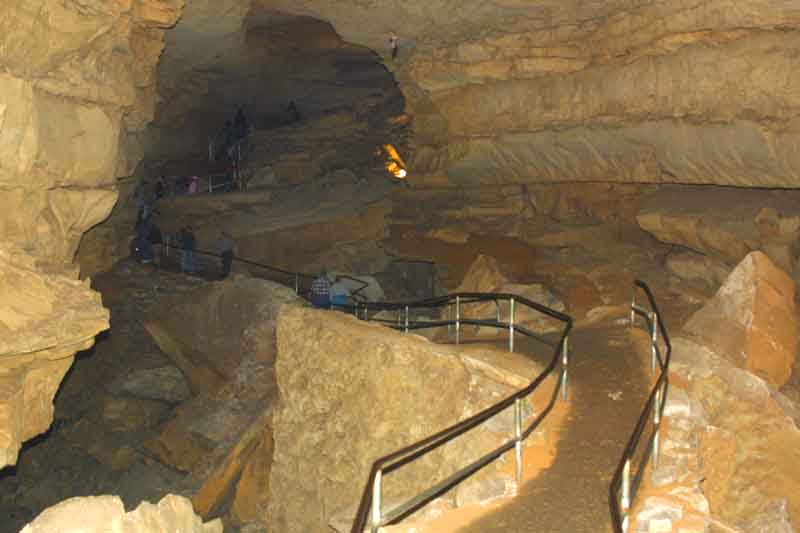
|
The cave opens up here, into a larger chamber.
We are still going up, and are getting near the surface. This area has more
of the look of a large cavern, rather than a tunnel.
|
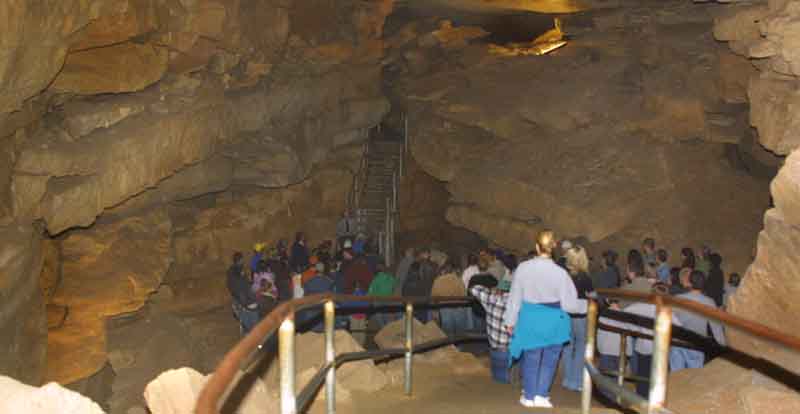
|
In the large chamber, we gather to listen
to our ranger guide explain what we are about to see.
|
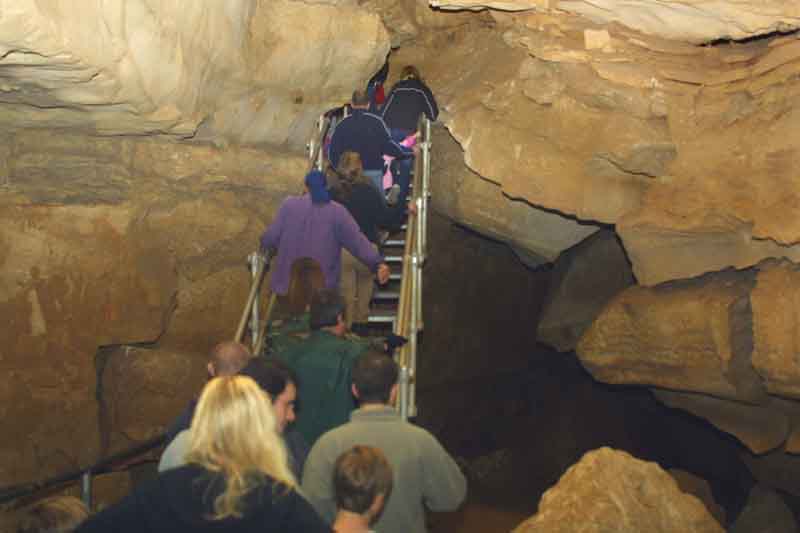
|
The stairway will take us up to the Frozen
Niagara section of the cave.
|